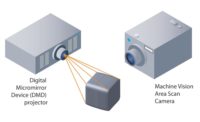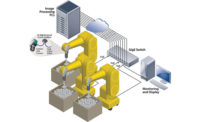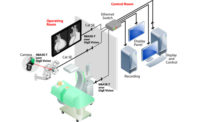Advances in camera, sensor, and video interface technologies have helped power the continuing development of machine vision solutions for manufacturing and quality inspection that far surpass the abilities of any human. These imaging systems find microscopic faults unperceivable to the human eye, move at speeds that would humble an Olympic track star, and lift weight far beyond the capacity of our muscles and tendons.
Sometimes overlooked in the development of new technologies is the human element. This is particularly true in machine vision applications, where a great deal of technology development is focused on replacing or augmenting human capabilities.
However, machine vision system designers and manufacturers should not forget that it is a human who makes a purchasing choice, sets up and maintains the system, and often monitors or analyzes the data to make business decisions. This article discusses how vision standards are both advancing the design of new machine vision technologies, while still addressing the human need for simple to maintain and use systems.
Plug-and-Play Advantages
USB has become the backbone for wired data connectivity in a range of consumer and computing devices, primarily because of its ease-of-use and wide availability. One exception has been machine vision, where previous versions of the standard failed to deliver the bandwidth required to support the transfer of uncompressed, raw data for real-time image analysis.
This changed with the USB 3.0 standard—or SuperSpeed USB—which provides 10 times the bandwidth of USB 2.0. Taking advantage of this raw speed and building on the concepts developed for GigE Vision, the machine vision industry standardized the transport of imaging and video data over a USB 3.0 cable with the release of USB3 Vision in February 2013.
With USB3 Vision, video and data is transmitted from cameras and sensors directly to existing ports on a computer, laptops, or tablet over flexible USB 3.0 cabling. The USB 3.0 bus delivers sustained throughput approaching 3 Gb/s, surpassing the performance of Camera Link Base configurations and rivalling Medium configuration but without requiring multiple cables or specialized PCIe frame grabbers at endpoints to capture data.
Bandwidth has been a major driver for the early adoption of USB3 Vision, but system manufacturers should not ignore the usability advantages afforded by more flexible cabling and plug-and-play connection.
In a bin-picking robot (Diagram 1), an external frame grabber converts the image feed from an existing Camera Link camera into USB3 Vision-compliant video. Video, power, and control data are transmitted over a single flexible, lighter cabling that is easier to install than the bulky cabling and connectors of legacy interfaces. This provides measureable time advantages during initial installation and future maintenance, while lowering the overall cost and complexity of the system.
In microscopy systems for inspection and analysis (Diagram 2), designers can cut costs, improve usability, and reduce complexity by converting Camera Link cameras into USB3 Vision cameras. These systems often use a Camera Link camera to transmit microscopic images to a computer for analysis and observation. The Camera Link video interface requires bulky, specialized cabling and a PCIe frame grabber to capture images at a desktop computer, resulting in more complex systems, higher costs, and limited component selection.
In comparison, a USB3 Vision external frame grabber transmits images from the microscope camera over a USB 3.0 cable directly to an existing port on a laptop, single-board computer, or tablet. Eliminating the need for a Camera Link frame grabber in a PCIe slot reduces the overall technical complexity of the system, with the easier-to-route plug-and-play USB 3.0 cable allowing faster setup and teardown of inspection stations.
Imaging Systems on the Move
End-users are increasingly migrating towards more portable vision systems that can be used across workstations on factory floors. While the evolution of smaller, more powerful cameras and image sources have supported the development of these solutions, vision standards play an important role in ensuring cost and usability advantages.
One example is barcode verification, where vision standards have significantly simplified design to enable compact tabletop imaging systems. Barcode print verification systems help lower costs, increase productivity, and reduce errors by providing detailed quality analysis to ensure high read rates in automated quality inspection and warehouse processes.
By identifying quality integration early in the manufacturing processes, labelling or marking systems can be upgraded or replaced before unreadable barcodes are produced. If printing errors are not detected quickly and automated reading systems can’t identify the product, then barcodes may need to be manually entered into supply chain systems or unverified products must be destroyed. This results in disrupted manufacturing processes and additional costs.
These print verification systems rely on machine vision hardware and software to ensure barcodes meet industry standards for readability in automated processes, with compact embedded video interfaces delivering cost and size benefits.
In the application shown in Diagram 3, the portable barcode verification unit employs a CMOS image sensor and specially designed lighting to capture a high-resolution image of the barcode. An embedded video interface converts the image into a GigE Vision or USB3 Vision-compliant image stream. Images are then transmitted over an off-the-shelf cable directly to a port on a computing platform where barcode readability is verified. Power over Ethernet (PoE) or USB Power Delivery further simplifies cabling and lower component costs. By eliminating the technical complexities of a PCIe frame grabber, and enabling one-cable installations, portable systems can be easily moved to various work cells across a manufacturing floor.
Wireless connectivity is now an expected feature for most end-users, and machine vision is no exception. Medical has been one of the first markets to fully embrace mobile imaging, with similar technology now being used for mobile nondestructive testing and inspection in industrial applications.
Embedded video interfaces provide systems manufacturers and integrators with a straightforward way to integrate GigE Vision 2.0 wireless video connectivity into cameras, X-ray panels, and other imaging devices for applications where cabling creates complexity, cost, and usability challenges.
The embedded video interface streams uncompressed video with low, consistent latency at sustained throughputs over an IEEE 802.11n wireless link. Depending on the application requirements, video can also be stored in the video interface frame buffer, with metered delivery over the wireless connection. Video is transferred directly to a laptop, tablet, or single-board computer, eliminating the need for a desktop PC with an expensive frame grabber card.
In an industrial X-ray application, wireless solution can be embedded in a flat panel detector (FPD) that can be moved between portable X-ray imaging systems. The embedded hardware wirelessly transfers real-time images from the FPD directly to a computing platform for display, analysis, and recording. There is no need for a standalone 802.11n bridge to connect imaging devices to a wireless network, or a PCIe frame grabber at each endpoint to capture image data; significantly reducing the technical complexity of the system.
Video for End-Users
Machine vision systems generate high-quality, uncompressed image feeds required for real-time automated processing and analysis. While many of these applications have other viewing requirements—for example live monitoring of an assembly line or archiving for quality assurance purposes—transmitting and recording high-bandwidth video is unpractical and expensive. Instead, system operators are often forced to install a second video system for general purpose viewing and recording.
Compression represents a new opportunity for manufacturers to design more economical, easier to use imaging systems for machine vision, live viewing, and recording purposes. There are two types of compression that designers should consider for imaging applications.
Lossy compression, also called “unrecoverable,” loses some of the information and clarity of the original image. H.264, popular for DVDs and Internet video streaming, is an example of lossy compression. It does an excellent job at reducing data size, with compression ratios of 50:1 or higher, but incurs high latency. The loss of image quality is unperceivable to the human eye, and the few seconds of delay has no impact when remotely viewing or recording the image stream.
This type of compression is ideal for vision applications with multiple end-users. For example, uncompressed video from a GigE Vision camera on a manufacturing line can be transmitted to processing and analysis platforms (Diagram 4). The same video can be multicast to a transcoder gateway, which compresses it using H.264 and transmits the video over a wired or wireless connection to an operations center. There, operators can remotely monitor the facility and key events can be recorded for later analysis.
Recoverable or mathematically lossless compression techniques, like JPEG-LS or certain modes of JPEG 2000, have much lower compression ratios, but all the original information is preserved. In addition, latency is much lower with this “light compression.”
This makes recoverable compression suitable for systems where low latency is required, but the data rate needs to be higher than what can be supported by the existing cabling. For example, 1080p color video can be streamed over a GigE cable, or Camera Link Full video can be transmitted over a USB 3.0 cable. As a result, designers can increase system functionality by delivering higher resolution images over less expensive, easier to use cabling.
The Human Benefits of Machine Vision
While technology development often focuses on “smarter, smaller, and faster,” behind every high-speed manufacturing robot and portable imaging application is a human who evaluates cost benefits before purchase, installs and maintains the system, and ultimately analyzes data to make a business decision. Designing these systems around standards-based video interfaces ensures these solutions are cost-effective and easier to use.







